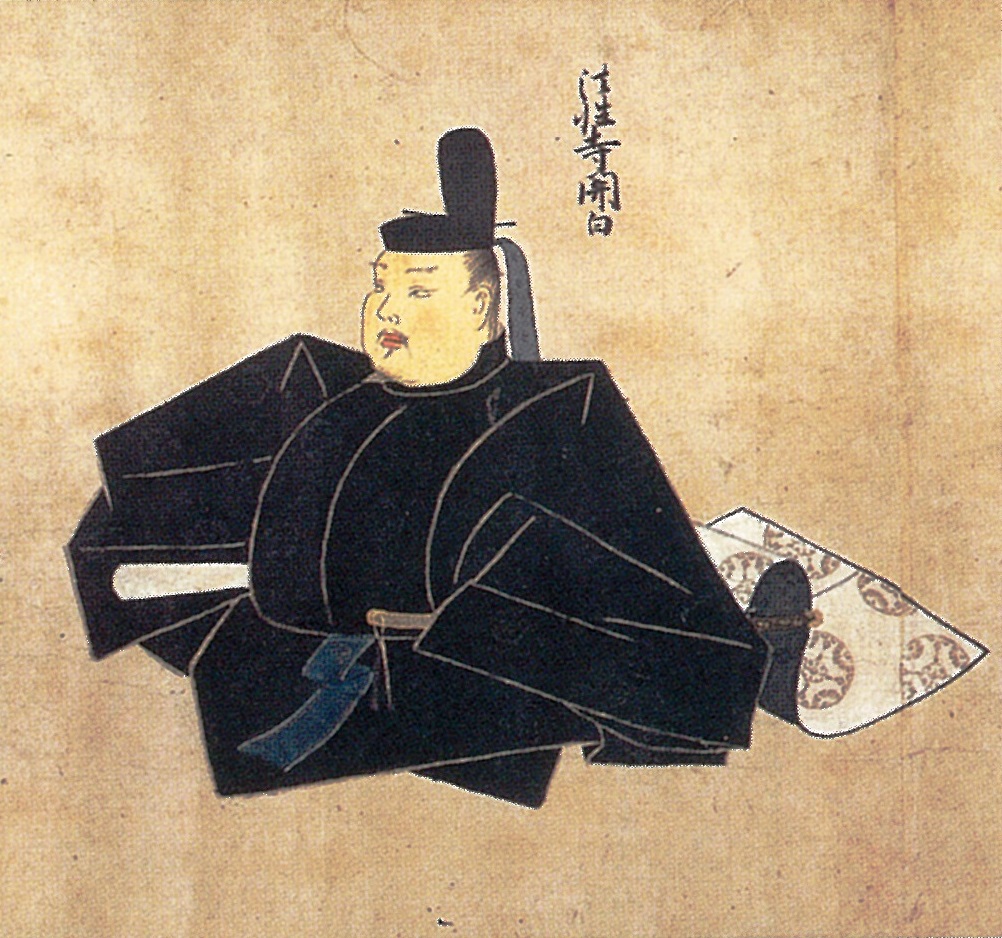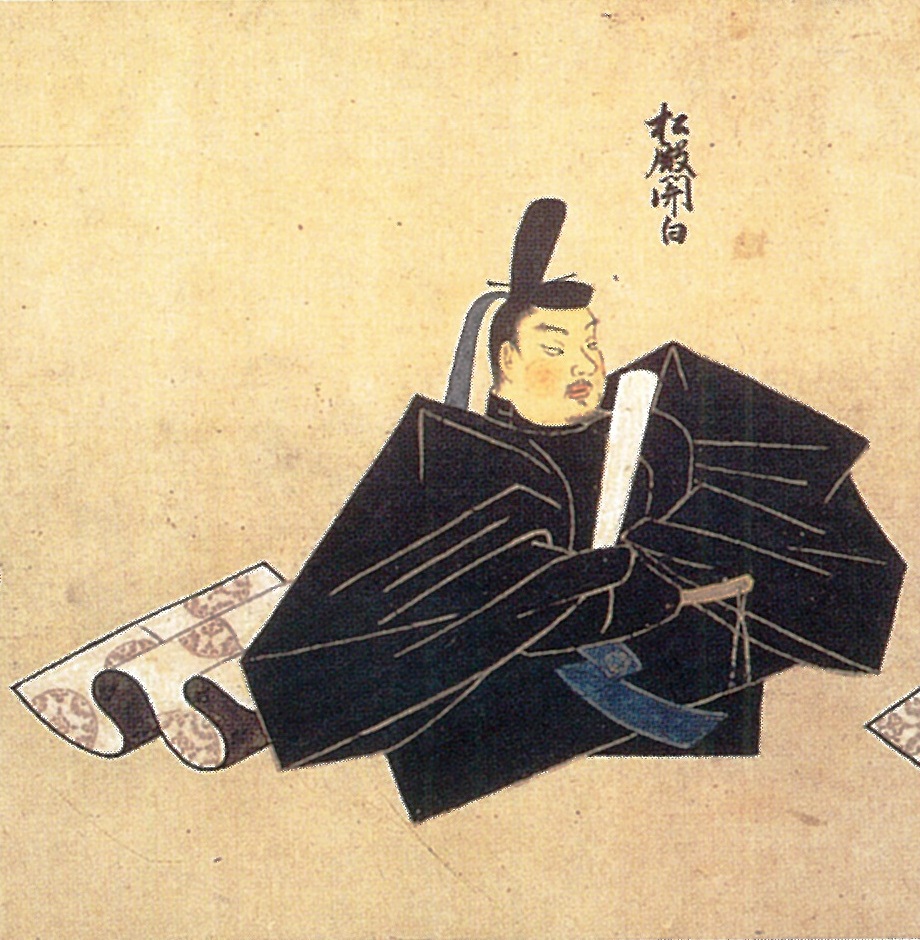|
Fujiwara No Kanefusa
was the fourth son of the Japanese regent Fujiwara no Tadamichi, and Kaga, daughter of Fujiwara no Nakamitsu. His brothers were Motozane (regent), Motofusa (regent), Kanezane (regent), and Jien. He lacked political capability, but he eventually became '' Daijō Daijin'' after his brother Kanezane. Family Parents *Father: Fujiwara no Tadamichi was the eldest son of the Japanese regent ('' Kampaku'') Fujiwara no Tadazane and a member of the politically powerful Fujiwara clan. He was the father of Fujiwara no Kanefusa and Jien. In the Hōgen Rebellion of 1156, Tadamichi sided with the ... (藤原 忠通, March 15, 1097 – March 13, 1164) *Mother: Kaga no Tsubone (加賀局), daughter of Fujuwara no Kanemitsu(藤原仲光) Consorts and issue *Wife: Daughter of Fujiwara no Takasue (藤原隆季) **Son: Kujo Kaneyoshi (九条兼良, 1167 – 27 January 1221) *Wife: Daughter of Fujiwara no Tsunemune (藤原 経宗) *Unknown **Son: Dōyō (道誉) **Son: Ken'en (兼円) ... [...More Info...] [...Related Items...] OR: [Wikipedia] [Google] [Baidu] |
Fujiwara No Tadamichi
was the eldest son of the Japanese regent ('' Kampaku'') Fujiwara no Tadazane and a member of the politically powerful Fujiwara clan. He was the father of Fujiwara no Kanefusa and Jien. In the Hōgen Rebellion of 1156, Tadamichi sided with the Emperor Go-Shirakawa, while his brother Fujiwara no Yorinaga sided with Emperor Sutoku. In 1162, he ordained as a Buddhist monk and took the Dharma name Enkan (円観). Marriage and Children Parents *Father: Fujiwara no Yorinaga (藤原 頼長, May 1120 – August 1, 1156) *Mother: Minamoto no Moroko (源師子), daughter of Minamoto no Akifusa (源顕房) Consort and issue: * Wife: Fujiwara no Soshi (藤原宗子, 1190 – 1155), daughter of Fujiwara no Munemichi (藤原宗通) ** Fujiwara no Kiyoko (藤原 聖子 ; 1122-1182), Wife of Emperor Sutoku, first daughter ** ''Third son'' (d.1127) * Wife: Minamoto no Nobuko (源信子), daughter of Minamoto no Norinobu (源国信) ** Konoe Motozane (近衛 基実, 1143 – August 23, 1166), f ... [...More Info...] [...Related Items...] OR: [Wikipedia] [Google] [Baidu] |
Fujiwara No Nakamitsu
Fujiwara (, written: 藤原 lit. "''Wisteria'' field") is a Japanese surname. (In English conversation it is likely to be rendered as .) Notable people with the surname include: ; Families * The Fujiwara clan and its members ** Fujiwara no Kamatari ** Fujiwara no Fuhito ** Fujiwara no Michinaga * Northern Fujiwara clan ** Fujiwara no Kiyohira ; Art and entertainment * Fujiwara (owarai), Japanese comedy duo (kombi) consisting of Toshifumi Fujimoto (藤本敏史) and Takayuki Haranishi (原西孝幸) * Atsushi Fujiwara (born 1963), Japanese photographer * Harry Fujiwara (Mr. Fuji) (1934 - 2016), Japanese-American wrestler * Hiroshi Fujiwara (born 1964), Japanese musician, trendsetter, producer, and designer * Kamatari Fujiwara (1905 - 1985), Japanese actor * Kei Fujiwara (born 1957), Japanese actress and film director * Keiji Fujiwara (1964 - 2020), Japanese voice actor * Motoo Fujiwara, lead singer and composer for the Japanese rock band Bump of Chicken * Tokuro Fujiwara, Japanese v ... [...More Info...] [...Related Items...] OR: [Wikipedia] [Google] [Baidu] |
Fujiwara No Motozane
Fujiwara no Motozane (藤原 元真 1143–1166) was a middle Heian period ''waka'' poet and Japanese nobleman. He is designated as a member of the Thirty-six Poetry Immortals. Motozane's poems are included in several imperial poetry anthologies, including the ''Shin Kokin Wakashū The , also known in abbreviated form as the or even conversationally as the Shin Kokin, is the eighth imperial anthology of waka poetry compiled by the Japanese court, beginning with the ''Kokin Wakashū'' circa 905 and ending with the ''Shinshoku ...''. A personal poetry collection known as the ''Motozane-shū'' also remains. External links E-text of his poemsin Japanese Fujiwara clan Date of birth unknown Date of death unknown 12th-century Japanese poets 1143 births {{japan-writer-stub ... [...More Info...] [...Related Items...] OR: [Wikipedia] [Google] [Baidu] |
Fujiwara No Motofusa
was an imperial regent in the late 12th century, serving both Emperor Rokujō and Emperor Takakura. He was also called , as he came from the village of Matsudono, near Kyoto. Fujiwara no Tadataka and Matsudono Moroie were his first and third sons, respectively. Though wielding great power as ''sesshō'' and ''kampaku'', Motofusa was prevented from becoming the head of the Fujiwara family by the political maneuvers of Taira no Kiyomori. An incident in 1170, while Motofusa was on his way to the Hōjuji Palace, further cemented his rivalry with the Taira clan. The Regent, along with a large retinue, was making his way to the palace for a ceremony which the cloistered Emperor Go-Shirakawa was supposed to attend, when a young boy, Taira no Sukemori, refused to make way for him and his retinue. As a result, the Regent's men smashed Sukemori's carriage and humiliated him. Sukemori was a grandson of Kiyomori and so, after a few failed attempts at reprisal, followers of Taira no Shig ... [...More Info...] [...Related Items...] OR: [Wikipedia] [Google] [Baidu] |
Fujiwara No Kanezane
, also known as , is the founder of the Kujō family (at the encouragement of Minamoto no Yoritomo), although some sources cite Fujiwara no Morosuke (908-960) as its founder. Kanezane organised the compilation of the Kitano Tenjin Engi, the history of the Kitano Shrine. In April 1186 he became regent and in 1189 was appointed Chief Minister. A descendant of Fujiwara no Michinaga's line, he was the son of Fujiwara no Tadamichi, and his brother, Jien was the author of the historical work ''Gukanshō''. Among his sons were , , and Yoshitsune. In 1202 he ordained as a Buddhist monk and took on the Dharma name Enshō (円証). Family * Father: Fujiwara no Tadamichi * Mother: Kaga no Tsubone * Wives and children: ** Wife: Fujiwara no Tomoko, Fujiwara no Sueyuki‘s daughter *** Kujō Yoshimichi (1167-1188) *** Kujō Yoshitsune *** Ryoku *** Empress Dowager Gishūmon-in Fujiwara no Takako (1173-1239) married Emperor Go-Toba ** Wife: Fujiwara no Akisuke’s daughter *** Ryoan ( ... [...More Info...] [...Related Items...] OR: [Wikipedia] [Google] [Baidu] |
Jien
was a Japanese poet, historian, and Buddhist monk. Biography Jien was the son of Fujiwara no Tadamichi, a member of the Fujiwara clan of powerful aristocrats. His brother was the future regent Fujiwara no Kanezane. Jien became a Tendai monk early in his life, entering Shōren-in at age eleven. He first took the Buddhist name ''Dokaei'', and later changed it to ''Jien''. He eventually rose to the rank of , leader of the Tendai. Jien eventually began to study and write Japanese history, his purpose being to "enlighten people who find it hard to understand the vicissitudes of life". His masterpiece, completed around 1220, was humbly entitled, '' Gukanshō'', which translates as ''Jottings of a Fool''. In it he tried to analyze the facts of Japanese history. The ''Gukanshō'' held a ''mappo'' and therefore pessimistic view of his age, the Feudal Period, and claimed that it was a period of religious decline and saw the disintegration of civilization. This is the viewpoint generall ... [...More Info...] [...Related Items...] OR: [Wikipedia] [Google] [Baidu] |
1153 Births
Year 1153 ( MCLIII) was a common year starting on Thursday (link will display the full calendar) of the Julian calendar. Events By place Byzantine Empire * Spring – Andronikos Komnenos, son of Isaac Komnenos, is imprisoned in the imperial palace for conspiring against his uncle, Emperor Manuel I (Komenenos) at Constantinople. Levant * August 19 – Siege of Ascalon: King Baldwin III of Jerusalem captures Ascalon, the last Fatimid fortress in Palestine. The citizens are allowed to leave in peace and return to Egypt. * Raynald of Châtillon, a French nobleman, marries Constance of Antioch (after given permission by Baldwin III) and becomes Prince of Antioch. England * Spring – The 19-year-old Henry of Anjou lands with a Norman fleet (some 40 ships) on the south coast of England. He defeats King Stephen (a cousin of his mother, Queen Matilda) with a small army at Malmesbury. Henry travels north through the Midlands, while a temporary truce is acc ... [...More Info...] [...Related Items...] OR: [Wikipedia] [Google] [Baidu] |
1217 Deaths
1 (one, unit, unity) is a number representing a single or the only entity. 1 is also a numerical digit and represents a single unit of counting or measurement. For example, a line segment of ''unit length'' is a line segment of length 1. In conventions of sign where zero is considered neither positive nor negative, 1 is the first and smallest positive integer. It is also sometimes considered the first of the infinite sequence of natural numbers, followed by 2, although by other definitions 1 is the second natural number, following 0. The fundamental mathematical property of 1 is to be a multiplicative identity, meaning that any number multiplied by 1 equals the same number. Most if not all properties of 1 can be deduced from this. In advanced mathematics, a multiplicative identity is often denoted 1, even if it is not a number. 1 is by convention not considered a prime number; this was not universally accepted until the mid-20th century. Additionally, 1 is the s ... [...More Info...] [...Related Items...] OR: [Wikipedia] [Google] [Baidu] |


.jpg)
